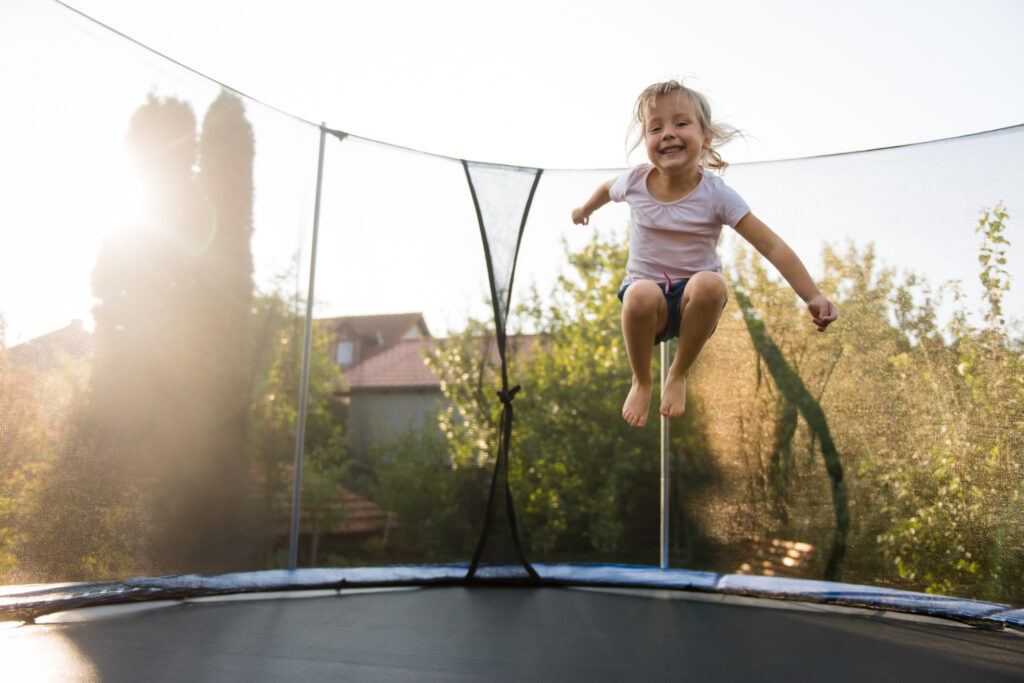Risky play teaches children to trust themselves and navigate their environment safely.
Every day, we find situations where children can take calculated risks. Simple activities such as walking, running and climbing involve risks, and the more children do them, the better they become at them. No matter how hard we try to keep our children safe, they can still hurt themselves while playing because play is never completely safe. Childcare centres and school playgrounds can have smooth and soft fall surfaces, but we can’t guarantee that kind of safe environment elsewhere.
Children need risky play because it teaches them the skills and knowledge to recognise and deal with risks. Not giving them a chance to learn these things would be a more significant threat to their safety. Let’s discuss why we should provide opportunities for risky play, so that children can take calculated risks and how this equips them for real-world environments and situations.
What is risky play, and why is it important?
Risky play is an enjoyable activity for children that involves a certain degree of risk of physical injury. It is a natural part of play and will vary widely among children of different ages. Risky play does not involve intentionally putting a child in harm’s way. Instead, it gives them the opportunity to challenge themselves by testing and exploring their limits and boundaries. As they discover what will happen when they try new things, children learn and their self-confidence and their independence increases.

Risky play is entertaining and rewarding for children. They engage in this play for enjoyment, excitement, pride and a sense of achievement. It is essential, however, that the playscape be well supervised with age-appropriate activities so that children are less likely to be seriously harmed.
Engaging in risky play has significant benefits for child development. Learning more about who they are and what they can do helps children build self-confidence, resilience, executive functioning skills and even the ability to handle risks. Risky play will also strengthen their muscles and organise their senses, which helps their brains grow.
When kids play in dangerous ways or get into challenging situations, they also learn to be creative and figure out how to solve problems. They also develop body awareness and become physically stronger, improving motor skills, balance and coordination.
Playing somehow guides children’s behaviour and helps them interact with others and deal with their emotions. Risky play encourages children to communicate their feelings, whether those emotions are fear, doubt, anxiety or something else. They learn how to talk about danger and how to keep others safe. Their language also develops as they figure out what words to use. This skill is important because it might make them less likely to get an anxiety disorder.
How do children engage in risky play?
Young children must be given the mental and physical space to explore boundaries and test their limits. By doing so, they can calculate risks and determine the level of danger suitable for them (exciting but not too scary).

Here are some ways children can engage in risky play:
Play with heights
- Climbing chairs, ladders, trees or play structures
- Balancing and jumping on stumps
- Swinging high
- Hanging on monkey bars
Risky play can involve playing with speed
- Riding a bicycle or sled
- Rolling on skates
- Running or sliding down a slide
Play with potentially dangerous elements
- Playing around or by a lake or river
- Engaging with other elements, like fire
Rough and tumble
- Wrestling or mock fighting
- Sword fighting
Risky play—getting lost or disappearing
- Hide and seek, get lost/disappear
- Exploring unfamiliar places
Play with dangerous tools
- Using a hammer or scissors, tools that can hurt
- Playing with knives, saws, axes, ropes or even power tools

How can you encourage risky play?
Risky play was a lot more common in the past. Nowadays, most parents are still uncomfortable letting their children play when risks are involved, even when they know it is beneficial for their child’s development. However, limiting risky play slows down their growth and might even make the child anxious about unstructured play. All children, regardless of age, skill level or gender, need access to risky play opportunities. Parents and teachers need to encourage children to take risks within safety rules and give them a chance to learn the critical skills they need to stay safe.
To help all children participate in risky play to some extent, parents and teachers should:
- Let children do what they are capable of on their own.
- Support and encourage children who are worried.
- Set aside time to play outside every day.
- Use positive language when accidents occur.
- Change activities to fit a variety of skills.
- Recognise the risk tolerance of each child.
- Encourage children to take small risks first.
- Never force activities they are uncomfortable with or unsure about.
- Give options, like taking a riskier alternative or using a tool.
- Encourage and support children as they take on more risky tasks.
The more children are free to play in dangerous ways, the better they will be at figuring out how to handle risks, what they can do and how to stay safe. An adult’s job is to create a learning environment that is both challenging and risky. This will help all children become more motivated, curious, capable and adventurous. Including dangerous play may make the adult in charge more nervous than the child, but it’s essential for growth and learning at this stage. Have fun exploring together and taking some small but important risks.

